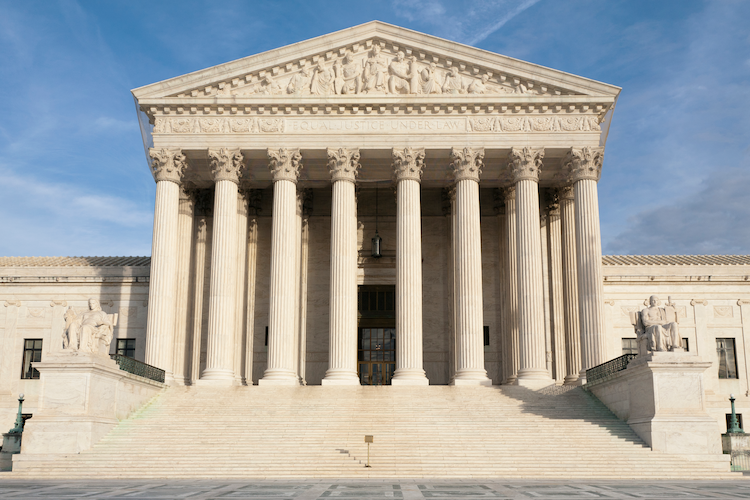SCOTUS Limits Foreign Reach of Trademark Law

In Abitron Austria GmbH v. Hetronic Int’l, Inc., 600 U.S. ____ (2023), the U.S. Supreme Court held that the trademark infringement provisions of the Lanham Act do not apply extraterritorially, but rather extend only to claims where the infringing use in commerce is domestic.
Facts of the Case
The case stems from a trademark dispute between Hetronic (a US. company) and six foreign parties (collectively Abitron). Hetronic manufactures remote controls for construction equipment. Abitron, once a licensed distributor for Hetronic, claimed ownership of the rights to much of Hetronic’s intellectual property and began employing Hetronic’s marks on products it sold.
Hetronic sued Abitron in the Western District of Oklahoma for trademark violations under two related provisions of the Lanham Act, both of which prohibit the unauthorized use in commerce of protected marks when that use is likely to cause confusion. Hetronic sought damages for Abitron’s infringing acts worldwide. Abitron argued that Hetronic sought an im- permissible extraterritorial application of the Lanham Act.
The District Court rejected Abitron’s argument, and a jury later awarded Hetronic approximately $96 million in damages related to Abitron’s global employment of Hetronic’s marks. The District Court also entered a permanent injunction preventing Abitron from using Hetronic’s marks anywhere in the world. On appeal, the Tenth Circuit Court of Appeals narrowed the injunction, but otherwise affirmed the judgment, concluding that the Lanham Act extended to “all of [Abitron’s] foreign infringing conduct.”
Supreme Court’s Decision
The Supreme Court reversed by a vote of 5-4. “Applying the presumption against extraterritoriality, we hold that these provisions are not extraterritorial and that they extend only to claims where the claimed infringing use in commerce is domestic,” Justice Samuel Alito wrote on behalf of the Court.
As Justice Alito noted in his opinion, the presumption against extraterritoriality is a “longstanding principle of American law that legislation of Congress, unless a contrary intent appears, is meant to apply only within the territorial jurisdiction of the United States.” Applying the presumption involves a two-step framework, which asks at step one whether the statute is extraterritorial. If not, step two addresses whether a suit seeks a (permissible) domestic or (impermissible) foreign application of the provision. That determination requires courts to identify the “focus” of congressional concern underlying the provision at issue, and then asks whether the conduct relevant to that focus occurred in United States territory.
In the case, the Court first determined that the two Lanham Act provisions are not extraterritorial. “Here, neither provision (of the Lanham Act) at issue provides an express statement of extraterritorial application or any other clear indication that it is one of the ‘rare’ provisions that nonetheless applies abroad,” Justice Alito wrote. “Both simply prohibit the use ‘in commerce,’ under congressionally prescribed conditions, of protected trademarks when that use ‘is likely to cause confusion.’”
In analyzing the second step, the Court centered on the location of the conduct relevant to the focus of the statutory provisions. It went on to find that “use in commerce” provides the dividing line between foreign and domestic applications of the Lanham Act provisions at issue. According to the Court, the Lanham Act is violated “each time a mark is used in commerce in the way Congress described, with no need for any actual confusion.”
Justice Sonia Sotomayor authored a concurring opinion, which was joined by Chief Justice John Roberts Jr. and Justices Elena Kagan and Amy Coney Barrett. While Justice Sotomayor supported the judgement, she argued that the Lanham Act may apply to overseas infringement where there is a likelihood of consumer confusion in the United States. “Because the statute’s focus is protection against consumer confusion, the statute covers foreign infringement activities if there is a likelihood of consumer confusion in the United States and all other conditions for liability are established,” she wrote.
Previous Articles
SCOTUS Takes Up Key Election Case Involving Mail-In Ballots
by DONALD SCARINCI on December 17, 2025
The U.S. Supreme Court recently granted certiorari in a key election case, Watson v. Republican Nat...
SCOTUS Adds Second Amendment Case to Docket
by DONALD SCARINCI on November 27, 2025
The U.S. Supreme Court will consider another important Second Amendment case this term. The latest ...
Key Takeaways from Oral Arguments in Court’s Controversial Voting-Rights Case
by DONALD SCARINCI on November 12, 2025
The U.S. Supreme Court recently heard oral arguments in Louisiana v. Callais, which involves a key ...
The Amendments
-
Amendment1
- Establishment ClauseFree Exercise Clause
- Freedom of Speech
- Freedoms of Press
- Freedom of Assembly, and Petitition
-
Amendment2
- The Right to Bear Arms
-
Amendment4
- Unreasonable Searches and Seizures
-
Amendment5
- Due Process
- Eminent Domain
- Rights of Criminal Defendants
Preamble to the Bill of Rights
Congress of the United States begun and held at the City of New-York, on Wednesday the fourth of March, one thousand seven hundred and eighty nine.
THE Conventions of a number of the States, having at the time of their adopting the Constitution, expressed a desire, in order to prevent misconstruction or abuse of its powers, that further declaratory and restrictive clauses should be added: And as extending the ground of public confidence in the Government, will best ensure the beneficent ends of its institution.





